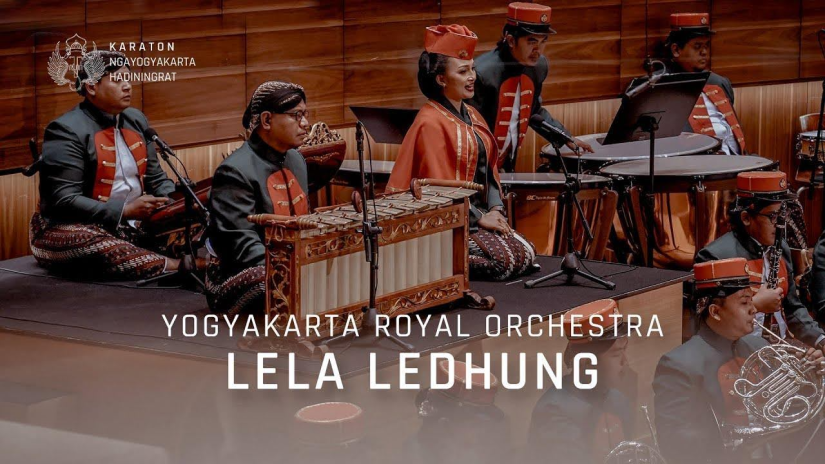
There is a viral song or Javanese song on social media entitled “Lela Ledhung”, this song is very much performed or used as a backsound for a video. Lela Ledhung is a song created by Markasan. The song was intended by Markasan as a lullaby, which later became quite popular in the post-independence period of the Republic of Indonesia. Lela Ledung went viral because of the Yogyakarta Royal Orchestra’s performance at the 2024 State Sovereignty Day Concert. Lela Ledhung, which has a pelog tune, was arranged by ML. Widyoyitnowaditro (Joko Suprayitno, S. Sn., M. Sn.) into an orchestra format nicely.
Lela Ledhung is one example of a Javanese dolanan song. Tembang dolanan Jawa is a type of traditional song that is full of cultural values. Known as songs that are often played in children’s games, tembang dolanan contain deep philosophies that not only teach moral values, but also preserve local wisdom through music. Tembang dolanan is an important part of the Javanese musical tradition, involving memorable wordplay and tones. The language used in tembang dolanan is simple and easy to pronounce, referring to Winarti (2010) tembang dolanan shows several language functions as a means of communication in Javanese.
Based on Winarti’s research. D (2010) in the Widyaparwa Scientific Journal of Language and Literature on Dolanan Song Lyrics as a Form of Javanese Language Communication, several language functions exist in the song Lela Ledhung, which is:
- Regulatory function
The song Lela Ledhung has a regulatory function located in the lyrics “Cep menenga aja pijer nangis” which means to tell someone, because basically this regulatory function is characterized by the use of command words.
- Interaction function
Interaction words are often found in dolanan songs such as greetings and questions, such as in the lyrics “Anakku sing ayu rupane” which is a greeting for her beautiful-faced child.
- Personal function
Personal functions usually show about themselves, for example showing beautiful traits for their own children.
- Heuristic function
It is the use of language to gain knowledge and is educational in nature, for example “Dadia wanita utama” and “Dadia pendekaring bangsa”.
- Imaginative function
Giving ideas that are imaginative and imaginary, as in the lyrics “Kae bulane ndadari kaya ndhas buta nggilani” gives the imagination that the moon is big like a buta or giant.
- Informative Function
Many dolanan songs use language that contains information, giving statements or explaining something. An example in the song Lela Ledhung is found in the lyrics that if you become the main person, you can raise the degree and name of your parents.
- Poetic Function
A song created must contain elements of beauty in it, such as the use of rhyme and certain language styles or diction, for example “Tak emban slendhang bathik kawung” followed by “Yen nangis mundhak gawe confused” has the same rhyme “ung”.
The functions in Lela Ledhung also apply to other dolanan songs. Although the language used is simple, dolanan songs have many functions and values in them, which can provide teaching and lessons for social life. With the spirit of cultural preservation, Javanese dolanan songs are not only entertainment, but also an effective medium to convey noble teachings that are still relevant for modern life today.
Reference
Winarti, D. (2010). Lirik Lagu Dolanan Sebagai Salah Satu Bentuk Komunikasi Berbahasa Jawa: Analisis Fungsi. Widyaparwa, 38(1), 1-12.
Picture Reference
music.youtube.com
[Public Relation Faculty of Cultural Science UGM, Editor: Sandya Kirani]

